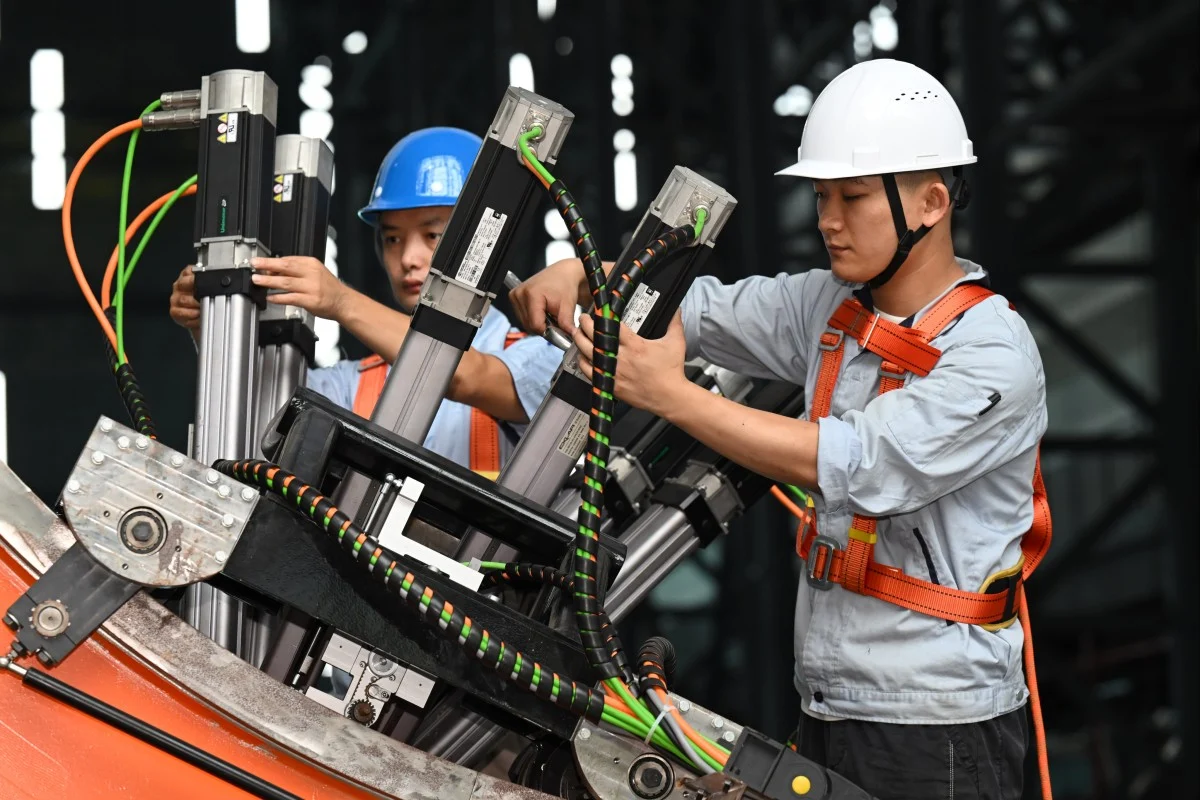China launches its largest nuclear fusion plant “Kuafu”

China has launched its largest nuclear fusion research facility – dubbed after a mythological giant – as it continues its quest to build an "artificial sun". A report from Xinhua on Monday revealed for the first time the interior of the main building of the already completed plant in eastern China's Anhui province.
The facility is formally known as the Comprehensive Research Facility for Fusion Technology (CRAFT) , but has been nicknamed “Kuafu,” after a mythical Taoist figure who attempted to capture the sun. Here is a depiction of Kuafu, normally seen as an optimistic spirit.

The report showed some of the facility's experimental components, including a prototype of one of eight massive pieces inspired by the orange segments that come together to form a hollow, doughnut-shaped chamber the t okamak torus, where the fusion experiments will take place.
A 700-ton (771-ton) superconducting magnet used for magnetic confinement fusion was also featured in the report
.
According to Xinhua, CRAFT is expected to be completed by the end of 2025 and scientists have already started working on designs for the complex.
According to an ancient Chinese fable, the giant Kuafu attempted to chase and capture the sun to end a drought. Although he died of thirst before he could be captured, he is considered a symbol of courage.
Nuclear fusion occurs when two lighter nuclei combine and form a single heavier nucleus. This process releases enormous amounts of energy and is also how our star generates energy. As global demand for carbon-free energy increases, fusion could be our way of “capturing the sun.”
Fusion is powered by deuterium and tritium, two variants of hydrogen commonly found in the ocean. According to Xinhua, one liter of seawater has enough deuterium to produce fusion energy equivalent to burning 300 liters (79 gallons) of gasoline.
Fusion does not emit greenhouse gases, but it does release helium, and the radioactive waste produced can be recycled within a century. It also uses no uranium or plutonium and there is no risk of meltdown in a fusion reactor.
CRAFT is part of China's plan to replicate renewable energy production.
The Experimental Advanced Superconducting Tokamak (EAST), a superconducting magnetic fusion reactor, uses magnetic fields to confine plasma at very high temperatures. The plant, also located in Anhui, has achieved numerous achievements in fusion power generation.
These discoveries are expected to contribute to the operation of the International Thermonuclear Experimental Reactor (ITER) in France, the largest fusion experiment in the world.
Hu Jiansheng, deputy director of the Institute of Plasma Physics of the Chinese Academy of Sciences, told the Global Times in 2022 that China has already achieved 80% of the key technological research needed for fusion energy. He added that China could have usable fusion energy within 30 to 50 years.
CRAFT is an important stepping stone towards operational nuclear fusion, as it will be used to test key technologies for the Chinese Fusion Engineering Test Reactor (CFETR), a proposed large-scale power generation tokamak device that is expected to be completed around 2035.

Thanks to our Telegram channel you can stay updated on the publication of new Economic Scenarios articles.
The article China launches its largest nuclear fusion plant “Kuafu” comes from Economic Scenarios .
This is a machine translation of a post published on Scenari Economici at the URL https://scenarieconomici.it/la-cina-lancia-il-suo-piu-grande-impianto-di-fusione-nucleare-kuafu/ on Tue, 19 Sep 2023 12:55:04 +0000.

